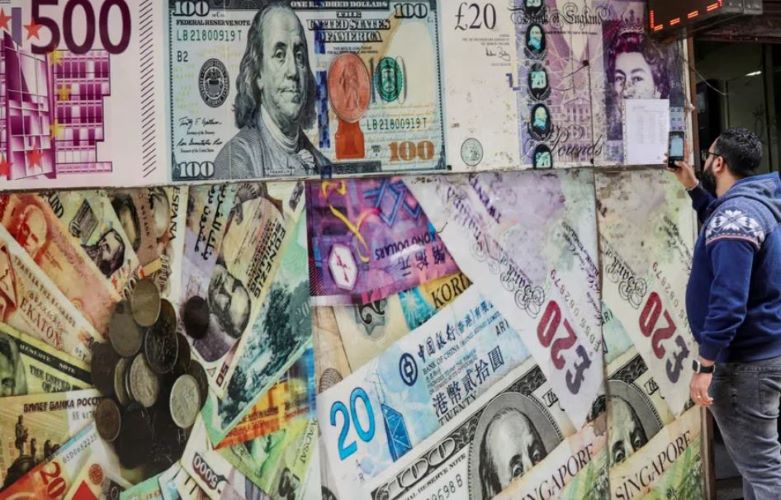MARKET watchers worldwide are eagerly anticipating the outcome of the US Federal Reserve’s next meeting later this week. Closer to home, regional central banks are also gearing up for key meetings. The Bank of Thailand (BOT), for one, will hold its next rate review on Wednesday (Jun 12), just before the Fed’s decision.
Expectations for the Fed’s and BOT’s decisions could not be more different.
While watchers generally expect the Fed to stand pat on its elevated benchmark rate, the word on the street is that Thailand may announce a rate cut. Elsewhere in the world, the European Central Bank last week started cutting rates from record highs, by 0.25 percentage point.
As for Singapore, the central bank has a unique monetary policy due to the Republic’s exchange-rate targeting approach.
Nonetheless, such a divergence between the Fed and the rest of South-east Asia would have, at least, seemed unlikely or even impossible.
After all, the region’s economies including Malaysia, Thailand, Indonesia and the Philippines suffered massively from capital outflows during the Asian Financial Crisis (AFC) in the late 1990s, with deep recessions, soaring unemployment and collapsing currencies as investors pulled money out.
Higher regional rates
Since then, rates in the region have generally stayed higher than rates in developed markets, particularly the US. South-east Asian currencies cannot provide the safety and stability that the greenback offers, so there was a need to offer investors a significantly higher return.
Fortunately, things have changed in recent years. As post-Covid inflation started to bite hard in late 2021, South-east Asian central banks followed the Fed in raising rates.
One big difference, however, was that the quantum of monetary tightening has been far lower. With inflationary pressures less severe in South-east Asia than in developed economies such as the US and Europe, regional central banks have been able to tame price pressures with lower rate increases.
The Fed drove its benchmark rate up by over five percentage points to hit a peak of 5.5 per cent back in July 2023 and has since held it unchanged.
In contrast, the BOT’s rate stands at only 2.5 per cent – a rise of two percentage points for this tightening cycle – while Bank Negara Malaysia’s peak rate stands at 3 per cent, an increase of 1.25 percentage points. On its part, Bank Indonesia’s official rate is at 6.25 per cent, marking a hike of 2.75 percentage points.
The largest hike in South-east Asian interest rates has been in the Philippines, with a jump of 4.5 percentage points to a policy rate of 6.5 per cent. Still, the quantum of the rise was lower than the Fed’s rate increase.
Resilient positions
Indonesia, Thailand, the Philippines and Malaysia now have a higher degree of monetary policy independence because their external balances – including the current account position, foreign exchange reserves and inflows of foreign direct investment – are much stronger and more resilient than in earlier periods.
These four countries ran current account deficits of between 3.4 and 7.9 per cent of their gross domestic product in 1996, the year just before the AFC.
Today, these current account balances are much stronger.
For instance, Indonesia even ran a current account surplus amounting to 1 per cent of GDP in 2022 – and registered a tiny deficit of just 0.1 per cent of GDP last year – amid a boom in key commodity exports.
Thailand will also return to a surplus position of 1.4 per cent of GDP in 2023, having run in deficit for two years in a row since 2020.
Malaysia has run a consistent current account surplus even before the pandemic. The surplus has come down from 3.1 per cent of GDP in 2022 to 1.2 per cent last year, but we expect it to go up to 2 per cent this year.
Meanwhile, post-Covid, the Philippines’ current account deficit has narrowed dramatically from 4.4 per cent of GDP in 2022 to just 1.3 per cent last year.
These improvements have come about due to massive structural changes in each economy. This includes steps to raise productivity and competitiveness, improved supervision of the financial sector and more transparent and liquid capital markets.
These changes are continuing. Indonesia recently embarked on more downstream efforts to boost its value-added exports, while Thailand has loosened its visa restrictions to boost tourist arrivals that will in turn increase its services exports.
As the world enters a cycle of monetary loosening, South-east Asian economies can afford to either ease earlier or by more.
More flexibility
With their improved financial stability, these economies now have more flexibility to adjust interest rates to levels that are optimal in balancing growth and inflation in their respective countries. They no longer need to closely follow the Fed.
For now, the Philippines’ central bank sounds rather neutral or even dovish based on its latest monetary policy decision statement. Interest rate cuts are probably near and its currency, the Philippine peso, is one of the more resilient currencies against the US dollar. The country has the flexibility to cut ahead of the Fed without jeopardising its currency stability, to support its softening growth momentum.
While there are concerns over household debt in Thailand, its strong external position and low inflation mean that it can also undergo monetary policy easing to boost its growth momentum. The first cut could be as early as the BOT’s review on Wednesday.
Malaysia has seen its export growth softening, but the strength of domestic demand means that it can afford to keep its monetary policy stance unchanged for now.
Indonesia will likely be the most cautious in cutting rates, given the risk of escalated imported inflation.
In addition, while the country’s external position has improved significantly over the years, Bank Indonesia will probably err on the side of caution in keeping rates high to attract capital inflows back onshore.
Singapore, though operating not via a direct interest rate mechanism but through an exchange rate policy, could also ease its monetary policy to support growth, as growth momentum is slowing.
Regardless of what each central bank does, they now have much more freedom in adjusting monetary policy than before. The Fed’s influence as the de facto setter of interest rates is waning, at least in this part of the world.
Source: The Business Times
Link: Here
June 13, 2024













